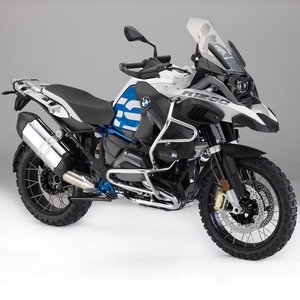BMW R 1200 GS Adventure (2005-2007): The Globetrotter’s Ultimate Companion
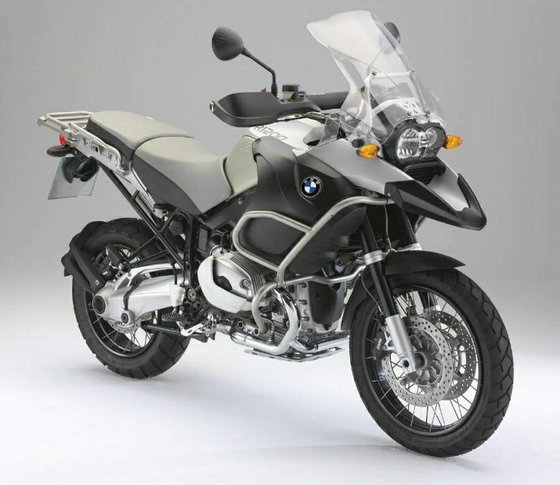
Introduction
When BMW introduced the R 1200 GS Adventure in 2005, it wasn’t just launching another motorcycle—it was unleashing a philosophy. Designed for riders who view highways as mere suggestions and dirt roads as invitations, this machine redefined what a production adventure bike could achieve. After spending days with a well-maintained 2006 example, it’s clear why this generation remains legendary among overlanders and weekend warriors alike. From its bombproof boxer engine to its continent-swallowing fuel range, the R 1200 GS Adventure feels less like a motorcycle and more like a trusted expedition partner.
Design & Ergonomics: Built for the Long Haul
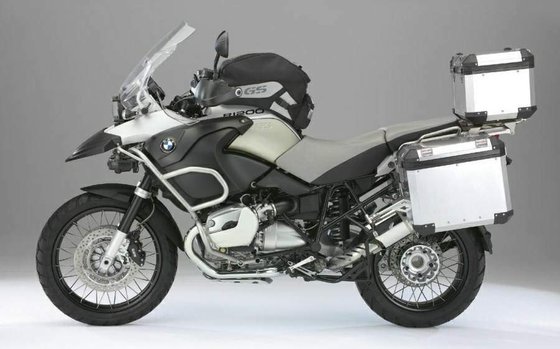
The R 1200 GS Adventure’s design language shouts capability. Its towering stance (890-910 mm seat height) and 33-liter fuel tank dominate the visual profile, while stainless-steel crash bars and engine guards hint at its off-road intentions. The two-piece seat isn’t just adjustable—it’s a masterclass in ergonomic flexibility. In the lower position (890 mm), my 5’10” frame could flat-foot comfortably, while the 910 mm setting provided ample legroom for highway stretches.
The adjustable windshield deserves special praise. Even at 120 km/h (75 mph), turbulence remained minimal, with cleverly designed side flaps reducing lower-body buffeting. Hand protectors and wide aluminum footpegs (serrated for boot grip) completed the package, creating a cockpit that felt equally at home in urban traffic and Moroccan riverbeds.
Performance: Boxer Punch Meets German Precision
Engine & Transmission
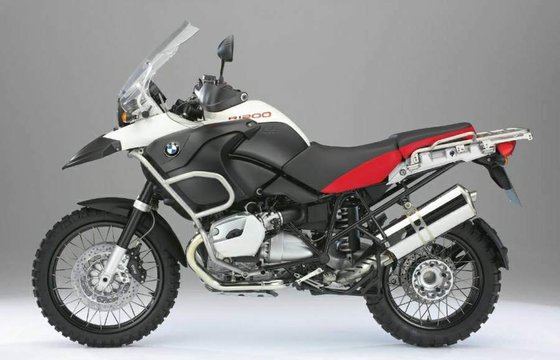
The 1170cc air/oil-cooled boxer twin is the star here. With 98 HP (73 kW) at 7,000 RPM and 115 Nm (84.8 lb-ft) of torque peaking at 5,500 RPM, power delivery is linear rather than explosive. Throttle response from the 47mm fuel injection is crisp, propelling the 256 kg (564 lbs) machine from 0-100 km/h (0-62 mph) in about 4 seconds. What surprises most isn’t the speed—it’s the engine’s dual personality.
At highway speeds (140 km/h/87 mph in 6th gear at 4,500 RPM), vibrations are nearly absent, thanks to the counterbalance shaft. But twist the throttle in 3rd gear on a mountain pass, and the boxer comes alive with a deep, rhythmic growl, pulling strongly up to its 8,500 RPM redline. The dry clutch (a rarity in 2005) requires a firm pull but rewards with precise engagement, especially when paired with the slick 6-speed transmission.
Suspension & Handling
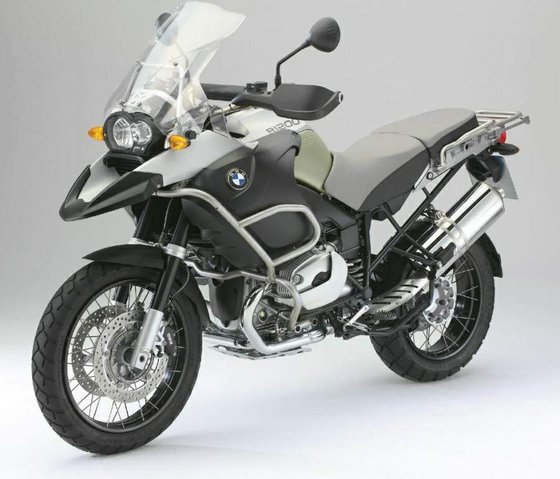
BMW’s Telelever front suspension (41mm stanchions, 210mm travel) and Paralever rear (220mm travel) create a magic carpet ride that must be experienced to be believed. On broken asphalt, the system swallows potholes whole, while off-road, the long travel allows confident 80 km/h (50 mph) dashes across washboard roads.
The real revelation is how this 2250mm (88.6") behemoth handles tight trails. The 1511mm (59.5") wheelbase and 26.2° rake provide slow-speed maneuverability that rivals smaller bikes. Stand up on the pegs, and the chassis communicates every terrain nuance—a feat considering the 150/70-R17 rear tire’s highway-biased profile.
Riding Experience: From Café to Canyon
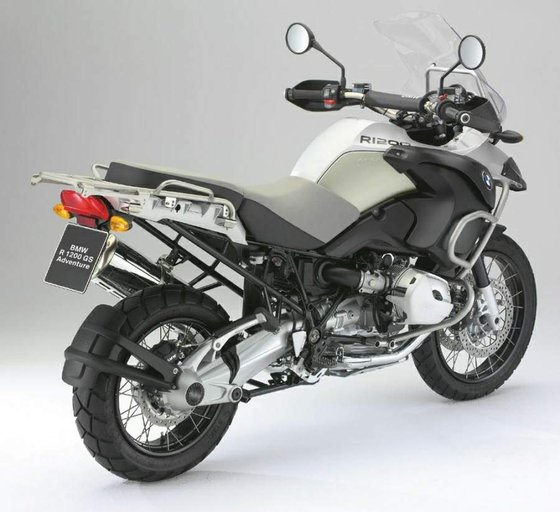
On-Road Manners
At legal highway speeds, the GS Adventure is a Zen master. The shaft drive eliminates chain snatch, while the 33L tank (8.7 gal) offers a 700 km (435 mi) range at 5.2 L/100km (45 mpg). Cruising through Alpine passes, the bike feels planted, with the 305mm dual front brakes (4-piston calipers) inspiring confidence during aggressive descents.
Off-Road Prowess
Don’t let the 256 kg wet weight fool you—this BMW dances in the dirt. The 19"/17" spoked wheels (110/80-R19 front, 150/70-R17 rear) float over sand, while the 220mm rear suspension travel absorbs landing jumps. Standing up, the wide bars provide leverage to pivot around tight switchbacks. Just avoid deep mud—the 265mm rear brake (2-piston) lacks the bite for rapid speed shedding on slippery inclines.
Competition: Kings of the Adventure Hill
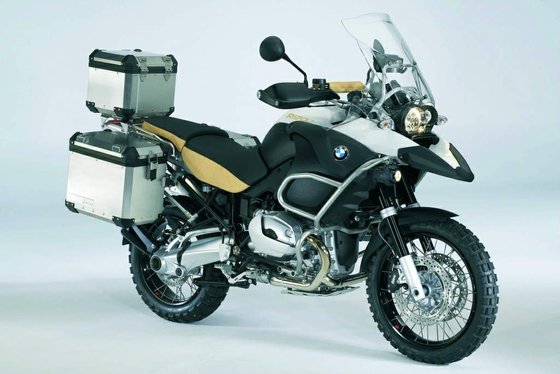
In 2005-2007, the GS Adventure faced formidable rivals:
- KTM 990 Adventure (2006):
- Lighter (213 kg/470 lbs) with a fiery 98 HP V-twin
- Superior off-road suspension (275mm travel)
-
GS Advantage: Shaft drive reliability, 150km greater range
-
Honda Africa Twin XRV750 (2003):
- Legendary reliability, 680cc V-twin
-
GS Advantage: 50% more torque, modern electronics
-
Triumph Tiger 955i (2001-2005):
- Smooth triple-cylinder engine
- GS Advantage: Telelever suspension, 6th gear
While competitors excelled in specific areas, the GS Adventure’s blend of touring comfort and off-road capability made it the only bike capable of crossing a desert and arriving at a luxury hotel without seeming out of place.
Maintenance: Keeping the Adventure Alive
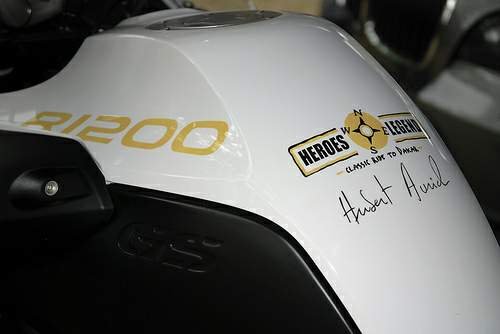
Key Service Points
- Valve Adjustments:
- Intake: 0.15mm (0.006") cold
- Exhaust: 0.30mm (0.012") cold
-
Use MOTOPARTS.store’s NGK DCPR8EKC plugs for optimal performance
-
Fluids:
- Engine Oil: 4L SAE 15W-50 (3.5L without filter)
- Final Drive: 180ml 75W-90 GL-5
-
Brakes: DOT 4 fluid flush every 2 years
-
Tires:
- Street: 2.2 bar front (32 psi), 2.5 bar rear (36 psi)
- Off-Road: Drop to 1.8 bar (26 psi) front, 2.0 bar (29 psi) rear
Common Upgrades
- Exhaust: Akrapovic slip-ons (like the Heroes Edition) reduce weight by 3kg
- Lighting: LED auxiliary lights improve night trail visibility
- **Suspension: Progressive springs for loaded touring
Conclusion: The Timeless Adventurer
Fifteen years haven’t dulled the R 1200 GS Adventure’s appeal. Its combination of mechanical simplicity (no water pump or ride modes) and sophisticated engineering (Paralever/Telelever) creates a bike that’s as rewarding to maintain as it is to ride. Whether you’re retrofitting modern GPS units or upgrading to crash-resistant panniers from MOTOPARTS.store, this BMW remains a canvas for personal adventure—proof that true capability never goes out of style.
Specifications sheet
| Engine | |
|---|---|
| Stroke: | Four-stroke |
| Max power: | 73 kW | 98.0 hp |
| Max torque: | 115 Nm |
| Fuel system: | Electronic fuel injection (BMS-K) |
| Max power @: | 7000 rpm |
| Displacement: | 1170 ccm |
| Max torque @: | 5500 rpm |
| Bore x stroke: | 101.0 x 73.0 mm (4.0 x 2.9 in) |
| Configuration: | Oposite |
| Cooling system: | Air/oil cooled |
| Compression ratio: | 11.0:1 |
| Number of cylinders: | 2 |
| Dimensions | |
|---|---|
| Wheelbase: | 1507 mm (59.3 in) |
| Dry weight: | 223 |
| Wet weight: | 256 |
| Seat height: | 890–910 mm (35.0–35.8 in) |
| Overall width: | 915 mm (36.0 in) |
| Overall height: | 1450 mm (57.1 in) |
| Overall length: | 2250 mm (88.6 in) |
| Ground clearance: | 220 mm (8.7 in) |
| Fuel tank capacity: | 33 L (8.7 US gal) |
| Drivetrain | |
|---|---|
| Final drive: | shaft |
| Gear Ratios: | 1st 1.583, 2nd 1.259, 3rd 1.033, 4th 0.903, 5th 0.903, 6th 0.805 |
| Transmission: | 6-speed manual |
| Maintenance | |
|---|---|
| Engine oil: | 15W50 |
| Break fluid: | DOT 4 |
| Spark plugs: | NGK DCPR8EKC / NGK DCPR8EIX |
| Forks oil capacity: | 1.3 |
| Engine oil capacity: | 4.0 |
| Gearbox oil capacity: | 0.8 |
| Final drive oil capacity: | 0.18 |
| Engine oil change interval: | Every 5000 km or 2 years |
| Valve clearance (intake, cold): | 0.15 mm |
| Valve clearance check interval: | 24,000 km (15,000 mi) |
| Valve clearance (exhaust, cold): | 0.30 mm |
| Recommended tire pressure (rear): | 2.5 bar (36 psi) solo / 2.9 bar (42 psi) loaded |
| Recommended tire pressure (front): | 2.2 bar (32 psi) solo / 2.5 bar (36 psi) loaded |
| Additional Features | |
|---|---|
| Optional features: | BMW Integral ABS, tubeless cross-spoke wheels, navigation system, heated grips |
| Standard equipment: | 33L fuel tank, adjustable windshield, crash bars, stainless steel luggage rack |
| Chassis and Suspension | |
|---|---|
| Frame: | Tubular space frame, engine load-bearing |
| Rear tire: | 150/70 z-17 |
| Front tire: | 110/80 z-19 |
| Rear brakes: | 265 mm disc, 2-piston caliper |
| Front brakes: | 2 x 305 mm discs, 4-piston calipers |
| Rear suspension: | Paralever with WAD strut, hydraulically adjustable preload |
| Front suspension: | Telelever, 41 mm stanchions, 9-step preload adjustment |
| Rear wheel travel: | 220 mm (8.7 in) |
| Front wheel travel: | 210 mm (8.3 in) |



